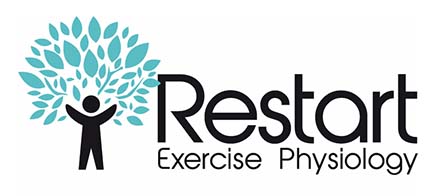What’s the difference between an Exercise Physiologist and a Physiotherapist?
As Exercise Physiologists, we are frequently mistaken for Physiotherapists, and frequently asked how our expertise differ from a Physiotherapist. The fact is our job descriptions do share a common end goal; we aim to facilitate improved muscle, bone and joint health via graded, evidence-based movement and exercise intervention. We do however, go about this in numerous different ways.
When asked how we differ from a Physio, I point to the stages of the injury cycle using an example of a muscle or joint injury eg left ankle sprain. During the ‘acute phase’ of the injury (immediately post-injury to approximately 10 days), it is recommended to visit a Physio to help control inflammation and pain, receive a diagnosis of the injury, and potentially acquire a temporary mobility aid such as a crutch or splint. Following this period during the ‘proliferation phase’ of the injury (approximately day 4 to 3 weeks), a Physio will commence gentle range of movement exercises, including soft tissue mobilisation and manual therapy, and perhaps ultrasound treatment to reduce scar tissue formation at the site of the injury. The next phase of the injury cycle is the ‘rehabilitation phase’ (3-4 weeks and onwards), which is when an Exercise Physiologist may begin to enter the fray (often in conjuction with continued Physio treatment). It is our primary role now to restore healthy joint mobility, strength and function, and in the example of the ankle, proprioception (sensory awareness) using balance and multi-directional exercises. All prescribed exercises are made relative to each individuals ADLs (activities of daily living) and performance goals.
Additional differences include…
Exercise Physiologist – deliver prescription and education on trigger point therapy and self-massage techniques, using equipment such as foam rollers and trigger point balls.
Physio – primarily deliver soft tissue mobilisation (massage), acupuncture, dry needling and ultrasound, but do also prescribe self-massage techniques.
Exercise Physiologist – receive injury diagnosis’ and deliver rehabilitation prognosis.
Physio – deliver injury diagnosis and prognosis.
Exercise Physiologist – Specialise in lifestyle education and lifestyle modification to support sufferers of a wide range of chronic health conditions to promote improved health and wellness and decreased morbidity risk.
Physio – typically specialise in the acute phase of an injury or negative health event, but do also deliver long-term rehabilitation and health monitoring.
Exercise Physiology as a profession, in comparison to Physiotherapy, has been around for a relatively short amount of time. Physical Therapy has been documented as far back as 460BC, with Physicians such as Hippocrates advocating massage, manual therapy techniques, and hydrotherapy. In more recent times, Physiotherapy as a profession dates back to the latter stages of the 20th century. Comparatively, as a recognised profession Exercise Physiology dates back to the 1990s, with the creation of our governing body Exercise and Sports Science Australia (ESSA) in 1991. Due to this, a lot of what we do as EPs is education, to both members of the public and fellow health practitioners, regarding exactly what our role is as rehabilitation specialists.
Similarities between professions include…
Study – Both Exercise Physiologists and Physiotherapists are Allied Health Professionals who have completed a 4 year University degree, studying subjects including anatomy, physiology, cardiopulmonary function, nervous system function and biomechanics. We are both recognised by Medicare and have a Medicare provider number, and must complete yearly continued professional development to maintain accreditation and membership with our respective governing bodies.
Rehabilitation specialists – Both Exercise Physiologists and Physiotherapists primary objective is to restore normal function following injury or surgery. We both utilise evidence-based mobilisation techniques to achieve this, including water-based exercise also known as hydrotherapy.
Health Fund Rebates – In recent years, Exercise Physiology has received much greater recognition by health insurance providers. EPs are mostly covered under the ‘Extras’ or ‘Natural Therapies’. In the near future I believe Exercise Physiology will have it’s own funding banner much like Physiotherapy, to allow for greater rebate potential and subsequent treatment affordability.
I hope this information is helpful to you as the reader; whether you have only recently discovered Exercise Physiology and want to know more on how we can help you become healthier, or perhaps if you are considering embarking on study in this field.
Luke

I though you guys were just glorified PT’s
G’day Jim,
Hopefully the above info helped clarify a few points for you in this regard! For particular people with acute musculoskeletal injuries, we do often become the conduit from Physiotherapist to Personal Trainer; once they have regained pain free movement post-Physio treatment, we provide rehab measures to restore optimal function towards their health, wellness and fitness goals, with the eventual goal of them returning to higher intensity, safe, self-prescribed exercise or exercise with a PT.
Hi Luke, Thank you for altering your Blog to correct some of your comments re Physiotherapy. Regards, Marion Slattery